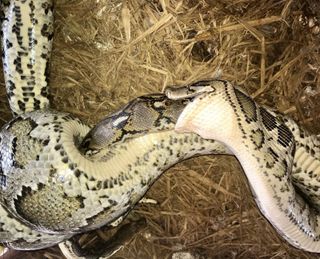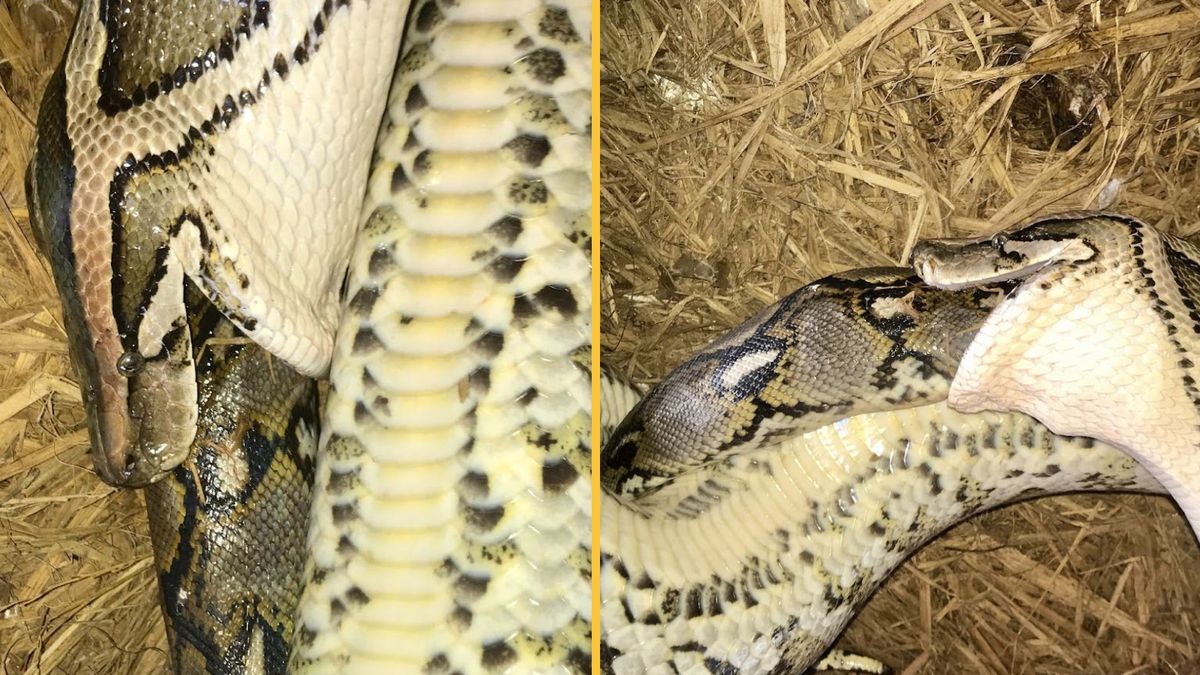A Burmese python has been spotted attacking and swallowing a reticulated python. The unusual encounter could be the first known case of these species — two of the world’s biggest snakes — preying on one another, scientists say.
Researchers in India observed the rare event in 2020, and images captured the moment the Burmese python (Python bivittatus) began feasting on the reticulated python (Malayopython reticulatus) from the tail up, while it was still alive. It took about two hours for the snake to be completely consumed, scientists reported in a research note published Aug. 20 in the journal Reptiles and Amphibians.
“It was a really unusual situation to find two pythons in the same area,” study co-author Ashikur Rahman Shome, a wildlife ecologist at Dhaka University in Bangladesh, told Live Science.
When the scientists arrived, the 10-foot-long (3 meters) Burmese python was coiled around the slightly larger reticulated python’s tail. The latter tried to fight back by constricting the Burmese python, but it eventually loosened its grip and was swallowed from the tail end up.
Related: The biggest snake in the world (and 10 other giant serpents)
Burmese pythons can grow to 19 feet (5.8 m), while reticulated pythons can reach up to 25 feet (7.6 m). In thi case, the reticulated python was larger than the Burmese, but the exact length was not taken, Shome said.

The event took place on the Akiz Wildlife Farm in Bangladesh’s Chittagong Division. This area is one of the few places where the ranges of Burmese and reticulated pythons overlap. The two snake species prey on similar animals, such as mammals, birds and lizards.
It’s not completely clear why the reticulated python was eaten, but given the better food options at the site, it might just have been a territorial dispute that ended up with one eating the other as an easy way to end the fight: “There are a number of chickens at the site. They make a better meal,” Shome said.
“To the best of our knowledge, this observation represents the first documented predation of M. reticulatus by P. bivittatus,” the team wrote in the paper.













